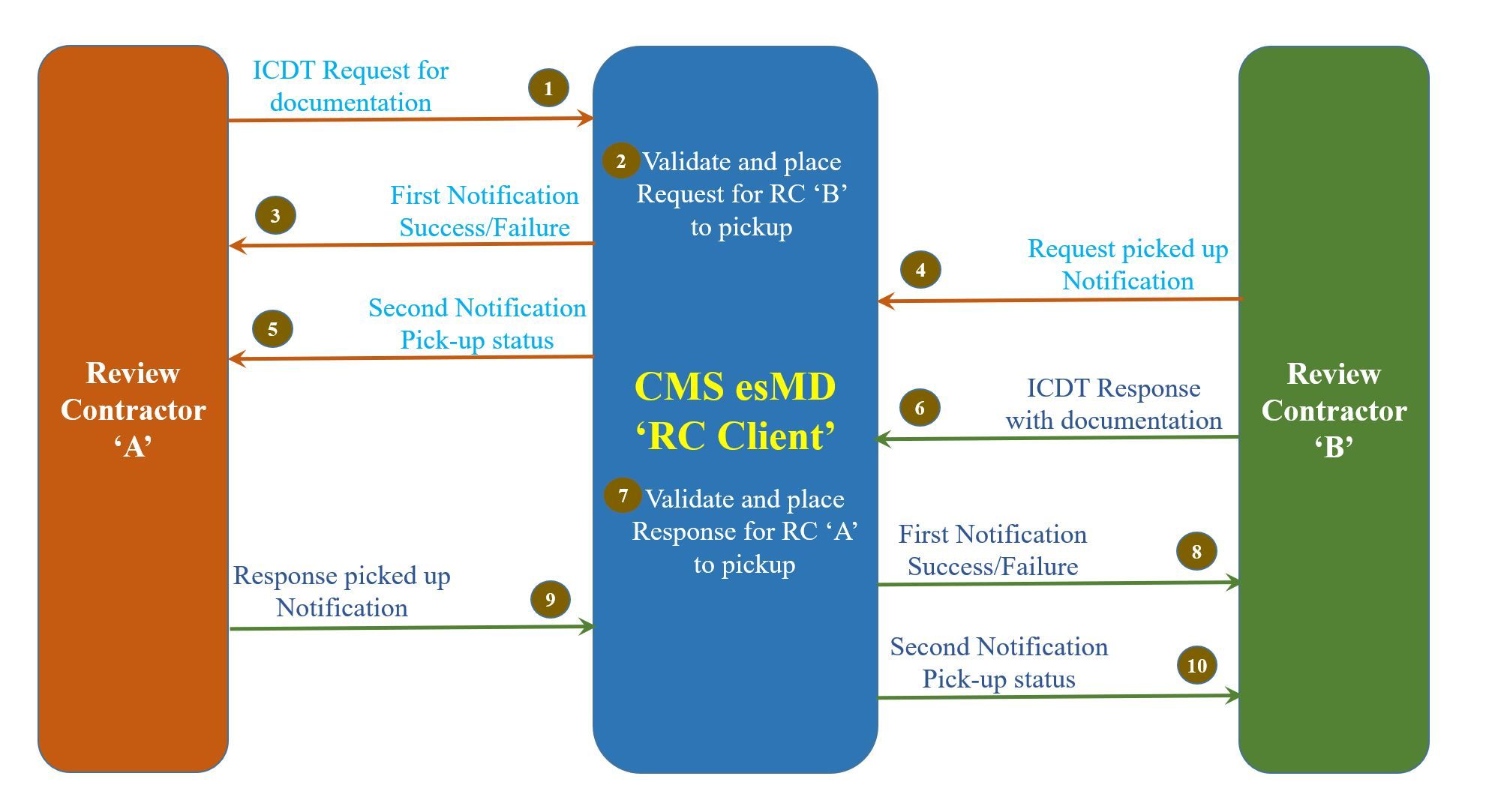Background
esMD shall support the following two use cases as part of the initial pilot rollout scope,
Use Case 1 (solicited) : RC A requests RC B for certain documentation. RC B responds to RC A with the requested documentation.
Use Case 2 (unsolicited) : HIH sends documents related to a claim to RC A instead of sending to RC B (example: HIH in FL should send to RC B who has FL jurisdiction, but incorrectly sends to RC A). In this case, RC A redirects the documentation to RC B thus saving time. This use case will be more effective when all RCs are using the ICDT mechanism. Therefore, participating RCs may implement this use case at a lower priority compared to use case 1.

Technical details of ICDT pilot
The RCs are all a part of the CMS private network and have access to the CMS enterprise Managed File Transfer (MFT) system. ICDT uses this existing private network and MFT system to exchange documentation.
Step 1 – RC A sends request for documentation to RC B using an ICDT request.
Step 2 – The esMD system validates the ICDT request and has the request ready for RC B to pick it up.
Step 3 – The esMD system sends a success/failure message back to RC A indicating whether esMD system received the document.
Step 4 – RC B picks up the document from esMD system and sends a notification to esMD that the document was picked up.
Step 5 – esMD system sends a notification to RC A indicating the request was picked up by RC B.
Step 6 – RC B prepares and sends the requested documentation in the form of an ICDT response.
Step 7 – The esMD system validates the ICDT response and has the response ready for RC A to pick it up.
Step 8 - The esMD system sends a success/failure message back to RC B indicating whether esMD system received the document.
Step 9 – RC A picks up the document from esMD system and sends a notification to esMD that the document was picked up.
Step 10 – esMD system sends a notification to RC B indicating the response was picked up by RC A.
What should an RC do to participate in the ICDT pilot?
Step 1 – Identify applicable use case(s) and other participating RCs with whom ICDT documents can be exchanged.
Step 2 – Gain capability to create ICDT request and response documents. For more information on format of these documents, please download this document (link to document with schema and sample XML).
Step 3 – Communicate with esMD support to determine a UAT plan and subsequently the quarterly release in which to go live.
Step 4 – Complete testing with esMD and go live.
